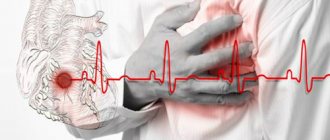Thin women are more likely to have sick children
A direct connection between low body weight and deterioration in reproductive function was recently established by Russian scientists from the Russian Academy of Natural Sciences (RANS), after analyzing the course of pregnancy of 350 residents of Balashikha near Moscow.
As reported to MK by the Russian Academy of Natural Sciences, the norm for expectant mothers is considered to be a weight of 60-65 kg with a height of 165 cm - it is with these indicators that pregnancy and childbirth proceed without complications. They give birth to the healthiest offspring. However, among the women examined, only a quarter were like this. Another 25% are complete. The remaining half of the study participants could safely be considered thin—their body weight was below normal. It is this contingent of pregnant women who constitute a risk group - they are 3-4 times more likely to have health problems during this crucial period than well-fed ladies. For example, 8% of low birth weight women had a miscarriage, 4% experienced bleeding, and 20% of frail women in labor experienced weakness in labor.
In addition, children also suffer from mother’s thinness - 15% of newborns were born with hypoxia, while infants of women with the “right” weight suffered from this half as often. It is also noted that 21% of babies of overly slender women have below normal weight (for women giving birth with an average weight - 12% of babies).
According to experts, if women planning to have a child gained the required kilograms, then 50-60 thousand more children would be born in Russia annually.
To summarize: research by Russian scientists shows that malnutrition and disproportionately low body weight pose a threat to the life of mother and child. Meanwhile, this threat is most often easily prevented and eliminated in a simple way - with the help of a rational diet.
This is exactly what the American doctor Tom Brewer devoted his life to. There is not a traditional midwife in the whole world today who does not know this name and who does not use in practice the results of this person’s work. For 50 years, he studied the problem of nutrition during pregnancy, wrote books and scientific papers, created the Internet site “Blue Ribbon Baby” (“Child with Excellent”), and provided consultations in person and online. The nutritional system he developed is based on dozens of scientific studies conducted by doctors throughout the twentieth century, as well as on his own clinical practice.
His greatest dream is for women to know the whole truth about the importance of nutrition during pregnancy. We can repay him by bringing this information to the Russian reader. This article is a review of numerous materials on the Internet site of Dr. T. Brever, as well as the works of other authors.
Conception and development of a child in the first month
During the process of fusion of female and male reproductive cells in the fallopian tube, a new organism is conceived, half of the characteristics of which depend on the mother, and the other half on the father. The single-celled organism begins to move towards the uterus, while it actively divides. By the end of the week, it already looks like a ball with liquid inside. This ball is attached to the epithelium in the uterine cavity. This occurs in the second week of pregnancy. Now he will feed on the substances in the uterus until the placenta is formed, which will deliver nutrients to the fetus.
In the fourth week, the baby’s main organs are formed
At 2-3 weeks, the embryo develops three layers - special layers of cells that serve as the basis for the formation of special tissue. Each leaf will subsequently form organs. From the internal - the organs of the digestive and respiratory systems, from the external - the nervous system and sensory organs, from the middle - the skeleton and muscles. The next week marks the transition from the embryo to the formation of the baby's organs. On the 23rd day the heart begins to beat. The embryo takes on clearer outlines, and the rudiments of organs appear. The embryo floats in a water sac and is connected to the placenta by an umbilical cord, through which nutrients are supplied to it. This is the most important period in development, since right now the formation of all organs and systems of the fetus occurs.
Video: the first month of intrauterine development of a child
Consequences of inadequate nutrition
The issue of nutrition during pregnancy is vitally important, has been thoroughly studied, and at the same time remains for most doctors and especially expectant mothers beyond the scope of problems that should be seriously worried about. In fact, the first time most pregnant women hear anything about nutrition from their doctor is when they gain excess weight or when their blood glucose level is high. By interviewing your friends, you can easily make sure that even very conscientious and attentive doctors do not worry if a woman weighs little or does not gain enough. Meanwhile, with improper and inadequate nutrition, the following serious complications can arise.
For the expectant mother:
- Late toxicosis of pregnancy (preeclampsia) is a painful condition in which fluid retention in the body (hydropsis of pregnant women), loss of protein in the urine, and increased blood pressure develop successively. Ultimately, if left untreated, severe brain complications develop, including seizures and coma, hemorrhages in vital organs, and the mother and child may die. Modern official medicine states that the cause of this condition is unknown. It is not true! It will be shown below that it is known and easily preventable.
- Miscarriage (premature birth and miscarriages) - because Due to improper nutrition, the placenta cannot develop normally.
- Premature placental abruption - close to childbirth, the placenta begins to separate from the wall of the uterus, the baby may die (50% chance), and the mother experiences bleeding. This occurs, among other things, due to the tendency to thicken the blood and form blood clots in the vessels of the uterus and placenta.
- Anemia (anemia) - due to insufficient intake or absorption of proteins, iron, and vitamins.
- Infectious complications, including those of the lungs, liver and kidneys.
- Weak labor, prolonged labor, exhaustion of the expectant mother during childbirth.
- Postpartum hemorrhage and decreased blood clotting.
- Slow healing of perineal wounds, the uterus contracts slowly after childbirth.
The child has:
- Intrauterine growth retardation, and intrauterine death is also possible.
- Low birth weight, as well as prematurity, low viability.
- Encephalopathy, decreased mental abilities.
- Hyperexcitability and hyperactivity.
- Reduced resistance to infections in utero, during and after childbirth, susceptibility to various diseases.
- Convincing yourself to take care of proper nutrition is not easy, but the results are worth it.
Time for a change
Most often, a woman's sexual desire changes during pregnancy. For some, it increases sharply, in which case the couple enthusiastically remembers nine months as a time of delightful sexual relations. For some, libido decreases or disappears completely. All this depends on the individual characteristics of pregnancy, the psychological and sexual constitution of the woman, the mood of the partner and the trimester of pregnancy.
In the first trimester, sexual desire most often weakens, especially if we are talking about the first pregnancy. This is facilitated by worries and fears associated with a new unknown condition, as well as poor health, fatigue, nausea, engorgement of the mammary glands, which are common during this period, and emotional instability associated with hormonal changes in the woman’s body.
The second trimester is usually marked by the restoration of sexual desire and harmonious partnerships.
In the third trimester, anticipation of childbirth, a large belly, which sometimes makes a woman feel unattractive, and problems associated with late toxicosis (nephropathy of pregnancy) often reduce sexual desire again.
What does it mean to eat poorly?
Incorrectness can be of various types:
- disadvantage (a situation that occurs much more often than is commonly thought)
- incorrect ratio of required components (often)
- poor quality of products (often)
- excess (much less common than the three above)
Necessary nutritional components include:
- squirrels
- carbohydrates
- fats
- vitamins
- minerals (including table salt, iron, magnesium, etc.)
- water.
This is common knowledge, however, read on and you will be surprised how little you actually know about it.
If we talk about quality, then all these components should be of the most natural origin, environmentally friendly and prepared, if possible, with minimal culinary processing (for example, it is better to steam and baked than fried). By the way, the famous Canadian midwife Gloria LeMay gives wonderful advice from one sensible doctor to an expectant mother who is afraid of gaining weight: “You don’t have to worry about weight gain as long as you eat food. By food I mean what is grown on the earth by Mother Nature. Everything you put in your mouth should be as close to its natural state as possible. If it’s a potato, then it’s baked “in its jacket.” If cereals - then dishes prepared by you personally from whole grains. If vegetables are organic and raw. If it’s sweets, then let it be a fresh peach, a piece of melon or half a banana.” The more refined the product, the more processed it is, the more it should be avoided (for example, the difference between French fries fried in refined oil and potatoes baked in their jackets is obvious). Gloria also recommends eating coarse gray sea salt purchased from a good store. It is healthier than purified iodized fine salt, as it is of natural origin and contains many essential microelements in trace quantities.
Now you need to find out all the most important things about each of the above nutritional components.
Problems in the first month of pregnancy - how to solve them
The first month is not always cloudless. Situations may arise where you need serious medical attention. Timely registration and regular examination by a doctor will help to avoid worries in the early stages of pregnancy.
Risk of pathology in fetal development
Such risks arise frequently. Pathology can be caused by both genetic and environmental factors. There are congenital and acquired pathologies. It is the congenital pathology that is already present at the moment of conception and is detected in the early stages of gestation.
Genetic pathologies are deviations in the chromosome set of a child. The following pathologies are caused by an incorrect set of chromosomes:
- Down syndrome - disorders of the 23rd chromosome; signs - dementia, specific appearance;
- Patau syndrome - problems with the 13th chromosome; manifestations - multiple malformations, idiocy, multiple fingers, problems with the genitals;
- Edwards syndrome - pathology of the 18th chromosome; symptoms - small lower jaw, narrow and short palpebral fissures, deformed ears;
- Sherishevsky-Turner syndrome - a violation of sex chromosomes, the absence of an X chromosome in a girl; signs - short stature, infertility, sexual infantilism;
- polysomy on the X and Y chromosomes is manifested by a slight decrease in intelligence, psychosis, and schizophrenia;
- Klinefelter syndrome in boys; signs - lack of hair, infertility, sexual infantilism; in most cases - mental retardation.
If the pathology is hereditary in nature, then nothing can be done to help. Many families have children with such diseases, unless the parents have decided to terminate the pregnancy.
Many families, even with such severe pathologies, decide to leave the child, knowing in advance what awaits them and the baby. A family I know is raising a child with multiple developmental defects. At his birth, his parents were told that he would not live another year. But thanks to the colossal efforts of the parents and careful care, the child continues to live, he is 11 years old. Although the boy has impaired motor and speech functions, his parents take him with them everywhere. The mother says that this child is not a burden to her (there are healthy children in the family), he even gives her strength to live. She constantly thinks what it’s like for him, because it’s much harder. They really love their boy.
If pregnancy occurs with complications
Deviations from the norm can occur already in the early stages of pregnancy. Serious complications of this period include:
- ectopic pregnancy - the fertilized egg develops outside the uterus. As a rule, with this pathology, the egg is attached to the fallopian tube, less often - in the abdominal cavity, in the ovary, or on the cervix. In these places there are no conditions for fetal development, so pregnancy is terminated at up to 10–12 weeks. The development of pregnancy in the tube, as a rule, leads to its rupture. The process is accompanied by pain in the groin area, nausea, perspiration appears, the pulse quickens, and scanty dark red discharge appears. In this case, treatment is carried out only through surgery;
Ectopic pregnancy occurs in 1–2% of all pregnancies - Corpus luteum cyst is a formation up to 8 cm in size that appears in place of the corpus luteum. The cyst most often disappears on its own by the 16th week or after childbirth. During this time it gradually decreases. In rare cases, cyst rupture is possible, then treatment should be carried out in the most gentle way possible using laparoscopy. In this case, the cyst is removed using three punctures of the abdominal wall. In this case, nothing threatens pregnancy;
- miscarriage is a fairly common complication. According to statistics, every 4th early pregnancy ends in miscarriage. Symptoms vary, but if they are seen in time, the pregnancy can be saved. Spontaneous abortion is most often accompanied by bleeding and severe pain in the abdomen and lower back. Abdominal cramps accompanied by pain should also be a concern. If you have such symptoms, you should call an ambulance. There are a number of factors that lead to termination of pregnancy in the early stages: hormonal imbalance: decreased or increased function of the thyroid gland and adrenal glands, a lack of female hormones can cause termination of pregnancy. Early detection and timely implementation of hormonal therapy can avoid problems;
- sexually transmitted infections. The fetus becomes infected, leading to its death;
- inflammatory and infectious diseases. They are accompanied by intoxication of the body, which has a detrimental effect on the embryo;
- genetic disorders in the fetus. As a rule, these disorders are not hereditary.
During my first pregnancy, the gynecologist diagnosed me with a threat of early miscarriage due to increased uterine tone. I was referred to a consultation with an endocrinologist. To save the fetus, the doctor prescribed me a drug that increases thyroid function. I took it in small doses, a quarter of a tablet, for the first three months. Then the medication was stopped. And my friend took the same pills throughout her pregnancy. Great help with problems with conception and childbirth is provided by specialists from Family Planning Centers, which are now located in all major cities. An integrated approach to the work of these centers makes it possible to solve quite serious problems.
Diseases of women dangerous to the fetus
The mother's diseases are dangerous for the developing fetus. The fetus may lack oxygen and receive inadequate nutrition. The most dangerous diseases for pregnancy are:
- mother's alcoholism;
- diabetes mellitus type 1 and 2;
- genitourinary tract infection;
- viral hepatitis;
- HIV infection;
- herpes, syphilis, gonorrhea;
- measles;
- high blood pressure;
- conflict of Rh factors of mother and child.
If these diseases are present, the pregnancy is carried out under the close supervision of doctors. Children born from such pregnancies are born prematurely, have underweight and related problems.
Attention: squirrels!
We will start with proteins, because, as we will see later, it is with disorders of protein metabolism, with protein deficiency that the majority of the complications that were mentioned at the beginning are associated. Below you will see why.
Here's what proteins provide during pregnancy:
- growth and development of the baby, placenta, uterus and mammary glands of the mother (constructive role), as well as reserves that will be used during breastfeeding
- transport of nutrients, vitamins, microelements (including iron), calcium (transport role)
- immune protection, since antibodies against bacteria and viruses are proteins (protective role)
- optimal functioning of the coagulation and anticoagulation systems (no bleeding or blood clots occur) (from 4-5 months of pregnancy the content of fibrinogen, prothrombin, blood coagulation factors V, VII, VIII, X increases - all these are proteins)
- maintaining plasma osmotic pressure; this is a property that does not allow the liquid part of the blood to leave the vascular bed, thereby preventing the occurrence of edema and blood thickening; at normal osmotic pressure of plasma, the blood volume is sufficient to provide nutrition and respiration for both mother and child, and the fluidity of the blood ensures the best blood supply; Proteins albumin and sodium chloride, that is, table salt, are responsible for this most important quality.
It is easy to understand what protein metabolism in the body depends on:
- from protein intake from food
- from digestion and absorption in the gastrointestinal tract (mainly in the stomach and small intestine)
- on the function of the liver (it is it that produces the main necessary proteins - construction, protective, necessary for coagulation)
- on the intensity of breakdown and loss of proteins (this applies to increased physical activity and some kidney diseases).
Here's how protein deficiency manifests itself during pregnancy:
- the earliest signs are insufficient weight gain and an increase in hemoglobin (HGB) and hematocrit (Ht); Please note - a high hemoglobin level (above 120 g/l) in the second and third trimester is a reason not to be happy, but to be wary, since it usually indicates blood thickening as a result of a lack of protein and a decrease in circulating blood volume
- delayed intrauterine development of the child (according to measurements of the height of the uterine fundus and abdominal circumference, as well as ultrasound), its malnutrition
- the appearance of edema (due to a drop in plasma osmotic pressure, the liquid part of the blood leaves the vessels into the tissues)
- increased blood pressure (this is a “reaction of despair” - due to a decrease in the volume of circulating blood, the body is forced to reduce the lumen of blood vessels and increase the pressure in them so that the remaining blood circulates more intensely)
- an increase in liver enzymes, indicating liver suffering due to protein starvation
- preeclampsia and eclampsia (expressed in headaches, increased reflexes, blurred vision and, finally, convulsions) are the most dangerous complications of gestosis, requiring urgent hospitalization
(For reference: the normal level of total serum protein is 65-85 g/l, a decrease to 60 g/l already indicates severe gestosis; serum albumin is normally 35-55 g/l, when it decreases to 30 g/l l edema develops; normal hematocrit is 0.36 - 0.42 l/l; weight gain of 2.3 - 4.5 kg over the period from 24 to 28 weeks is normal and indicates an adequate increase in circulating blood volume).
Everything's under control
In the middle and late stages, sex positions should be the most gentle, the main guideline in their choice is the woman’s comfort. In case of disagreement, you should meet her wishes halfway.
At any stage of pregnancy, the position lying on the side with the man behind is comfortable and easy for the expectant mother.
The position when a woman sits on her partner's lap with her back to him is especially good in the middle of pregnancy. It not only eliminates pressure on the abdomen and risk to the baby, but also allows the woman to control the depth of penetration. This position is also good because the man can freely caress his partner’s breasts and clitoris during intercourse.
Some positions with the woman on top also allow her to control the speed of movement and the depth of penetration of the penis, and are great even for late pregnancy.
Many women find the position on all fours comfortable.
At different stages of pregnancy, women may experience very different sexual desires and are eager to try different approaches. However, the swelling of the cervix and uterus itself in some cases makes vaginal intercourse not particularly pleasant. The woman should be given the opportunity to control the depth of penetration of the penis.
Some couples first try new clothing positions. This helps them focus their collective energy on the purely technical aspects and allows them to enjoy the funny side of the situation. At the same time, they are not at all bothered by such issues as the need to hurry and the problem of an erection that cannot wait long.










